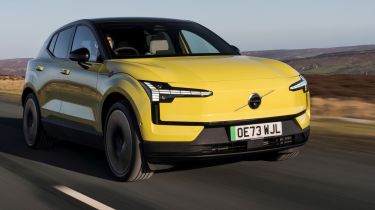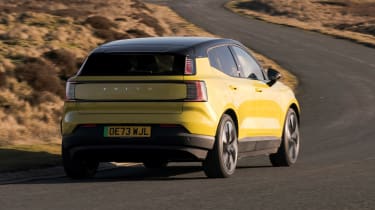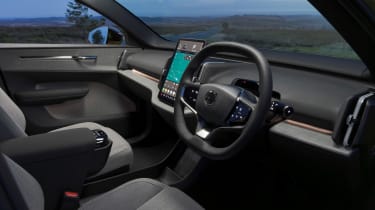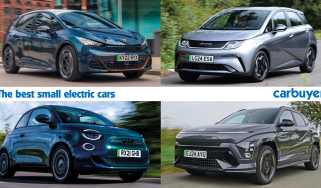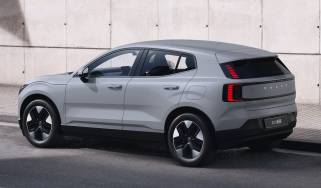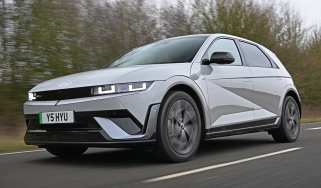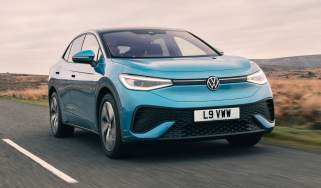Volvo EX30 review – an impressive budget EV
“The Volvo EX30 is a lot of electric SUV for the price you’d expect to pay for a petrol-powered Volvo”
Pros
- Well-priced
- Comfortable to drive
- Reasonable range
Cons
- Key features hidden in submenus
- Tight rear seats
- Small boot
Verdict – is the Volvo EX30 a good car?
We really like the Volvo EX30, and that’s mainly because it's an all-electric model that offers so much for the kind of price you’d expect to pay for a petrol-powered small SUV. Aside from its eco-friendly credentials, based on the electric powertrain and extensive use of sustainable materials, the EX30 is fun-to-drive, well-built and its styling will be a hit with many buyers. Top versions also offer serious performance, but we just wish the infotainment setup was more user-friendly and polished.
Volvo EX30 models, specs and alternatives
The Volvo EX30 is the Swedish brand’s smallest car, and its entry-level EV. There’s no doubt that electric cars are still expensive, but carmakers are very quickly racing to offer ever more affordable EVs to bring sustainable motoring to the masses. The Volvo EX30 is available in entry-level Core trim from just under £33,000, while mid-range Plus and top-spec Ultra trims start from around £35,000 and £43,000 respectively.
That means it undercuts quite a few established EVs in its class, including the excellent Hyundai Kona Electric that starts from £35,000. The Volvo EX30 is based on many of the same underpinnings as the Smart #1, but the EX30 feels like the more polished vehicle.
Despite being Volvo’s entry-level electric vehicle, the EX30 feels rather premium, and although the looks are subjective, we think its styling is attractive, too.
There’s a choice of two batteries: a 51kWh unit with a range of up to 209 miles, and a 69kWh battery that gets an official range figure of 296 miles. Charging speeds for the EX30 are competitive – with up to 153kW charging on 69kWh battery models (134kW speeds for the 51kWh battery version), a fast enough public charger can manage a 10 to 80% top-up in under half an hour.
The lesser models also get a single rear-mounted motor capable of 268bhp, and there’s an all-wheel drive dual-motor model with 422bhp, though the former will be more than enough for most drivers – we’d expect most sales to come from the single-motor model with the larger battery.
Our European test drive of the EX30 in single-motor guise revealed it to be a lot of fun for a small SUV – in fact, it could well be one of the best-handling Volvos we’ve driven in a while. The extra performance of the all-wheel drive, dual motor model we’ve now driven in the UK seems almost unnecessary unless you really have to have the quickest acceleration time, or fancy an alternative to more hardcore hot hatchbacks. The single-motor version felt more than peppy enough in urban and motorway driving. Features like one-pedal driving mean the Volvo EX30 can be extremely simple to drive when you want it to be.
The Volvo EX30 has a few EV rivals including the Smart #1 – with which it shares many of its underpinnings – the Kia Niro EV, Hyundai Kona Electric, Renault Megane E-Tech, Peugeot E-2008 and Jeep Avenger. There’s also the elephant in the room in the shape of the well-established Tesla Model 3. It’s not an SUV but the Model 3 now starts from just under £40,000, making it only slightly more expensive than the EX30 with the 69kWh battery in Plus trim.
| Trim levels | Power options |
|
|
Volvo EX30 alternatives
The Volvo EX30 finds itself in one of the most competitive classes of the moment, with almost every mainstream manufacturer clamouring to launch or bolster its small electric SUV offering. The Jeep Avenger and Hyundai Kona Electric are particularly strong rivals, with the latter being more practical than the Volvo, but the EX30 is very competitively priced.
Should you buy a Volvo EX30?
Loyal Volvo customers have been pining for a small and affordable model to fill the gap left in the lineup by the Volvo C30 hatchback. While it might be a small SUV, the EX30’s diminutive dimensions and competitive pricing mean it’s the closest the brand has come to a replacement.
It certainly has an appealing design, with strong lines and a wheel-at-each-corner stance, while remaining unmistakably Volvo thanks to its distinctive grille and ‘Thor’s Hammer’ light signature.
It’s backed up by strong technology, with powerful electric motors serving up plentiful performance and fast charging speeds for its battery.
The Volvo EX30 isn’t perfect though. Despite its boxy shape the EX30 is small, and this is reflected in its meagre practicality – its boot measures just 318 litres for instance. There are also some question marks around its infotainment software, with owners reporting quite a few bugs after it launched and an overreliance on the touchscreen, with almost no physical controls.
What is the best Volvo EX30 for families?
This tallies with our overall recommendation, because the Single Motor in Plus trim brings family-friendly kit like a powered tailgate, wireless smartphone charging and front Park Assist.
What is the best Volvo EX30 for keen drivers?
When equipped with dual electric motors the EX30 becomes an unlikely pocket rocket, with 422bhp and a 0-62mph acceleration time of just 3.6 seconds. That makes it one of the quickest cars of its type, but the driving experience doesn’t feel as sporty as all this power suggests.
What is the Carbuyer pick of the Volvo EX30 range?
We doubt many owners need the performance of the Twin Motor version, so we’d stick with the single motor in Plus trim. This adds more luxuries than the entry-level Core trim, but keeps the price below the £40,000 threshold.
How we tested the Volvo EX30
We have tested the Volvo EX30 on several occasions, both at its launch in Barcelona, Spain and on British roads. We've also put it head-to-head with the DS 3 E-Tense.
Which Is Best?
Cheapest
- Name200kW Single Motor Core 51kWh 5dr Auto
- Gearbox typeAuto
- RRP£32,250
Most Economical
- Name200kW SM Extended Range Core 69kWh 5dr Auto
- Gearbox typeAuto
- RRP£36,450
Fastest
- Name315kW Twin Motor Performance Plus 69kWh 5dr Auto
- Gearbox typeAuto
- RRP£41,550
